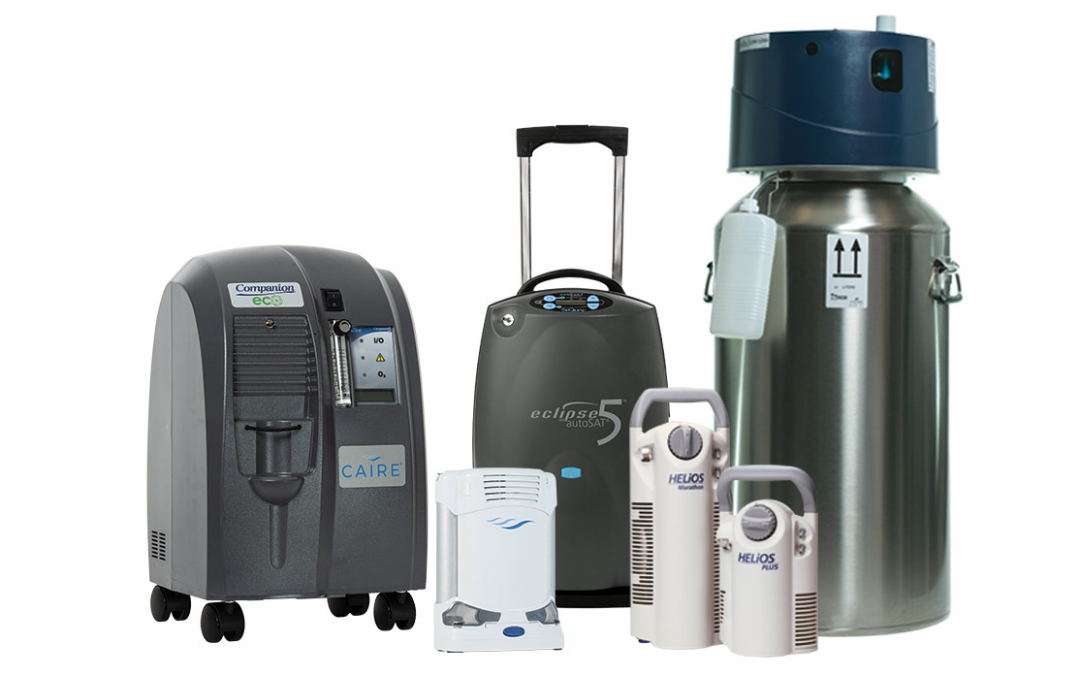Contributed by Bob “Oxygen Man” Rawlins, oxygen user and consultant to CAIRE Inc. ~
So, we are hearing that more and more people are going home with oxygen as they start to recover from COVID-19. If they are lucky.
And I sincerely mean that. In the fatal stage of COVID-19 many patients get into an Acute Respiratory Destress Syndrome situation. This can be a serious phase in which the survival rate is around 25-30 percent. But there is still much for the healthcare world to learn about and treat ARDS.
I know, I was fortunate to be one of the survivors of this dreaded prognosis. They told my family I had less than a 25 percent chance of survival. Therefore, to me and many others with compromising lung Issues need to take special precautions with this “monster” COVID-19.
In this blog, like many of my others I am going to talk about my personal journey and how I use oxygen therapy to stay active and healthy. Remember, this is no substitute for talking to your personal primary care physician or doctor about your health. My words are simply a resource to help you learn and grow in your knowledge of questions to ask on your next office visit, what resources and support may be available to you, and the general ways you can become a better advocate for yourself and others as you navigate your health and wellness goals.
Coming home with oxygen therapy prescriptions is a good thing versus the alternative.
Having a difficult time breathing is not fun nor is it anything but the most stressful and anxious experience I have ever endured. Some of you might recall that experience, not being able to breathe, or catch your breath when you did the simplest tasks. Like, going from my hospital bed to my side chair. It was scary the first time.
Good news, in today’s world of increasing therapy options it does not have to be all that scary. Look, you will be extremely nervous at first who would not be.
When your doctors tell you that you will be going home with oxygen, have a personal caregiver with you. A family member, a friend that is going to help you when you get home.
ASK QUESTIONS!
- How long, right? But it is not the most important question. (Keeping away from low oxygen levels and desaturation is more important.)
- What level should I be on when I am at rest and when I do something?
- Everyone’s therapy can de slightly different, understand that.
- How am I going to be set-up at home? Probably tanks at first.
- Depending on how often you are prescribed to be on oxygen, you may need a large stationary oxygen concentrator for your at-home needs.
- How flexible will I be with getting out?
- There are smaller tanks, and portable oxygen concentrators which operate on battery or electrical power – offering the greatest convenience because they never run out of oxygen like tanks.
The more answers you get before you get home will make it so much less stressful.
The great thing is, everything will be there and set-up for you. Make sure you are with the right oxygen supplier in your area. (It is not necessarily the one the hospital suggests, I changed twice before I was happy.) Have the conversations.
You already know that the anxiety will be there. This is all new – the unknown can inspire those feelings.
Feel comfortable before you leave. I would even try and call your oxygen supplier from the hospital before you are discharged. (A good job for your caregiver.)
I didn’t, and that was my mistake. I had to learn with more stress than I should have had.
You’ll want to have the oxygen therapy ready and out of the way when you get home, you will have some other challenges, maneuvering around furniture and other obstacles while wearing a hose in your nose. I have a 50-foot oxygen tube and cannula attached to my concentrator. Being on oxygen 24/7, I needed to sleep on it and get around. Now, it’s a breeze.
Just try and be patient. Try not to swear too much, but you will. 😊
Ok. Now we move on to using oxygen safely at home. Here is a great link from Cleveland Clinic Respiratory Therapy at Home outlining the major points to remember to stay safe.
Also, talk to your medical equipment provider about safety and read your product manual for important warnings and recommendations. Your manual may or may not be provided to you by the medical equipment provider, but the good news is that they can email you a link that will allow you to download a pdf, or you can find this document on the manufacturer’s website. Loop in your caregiver so you have an extra set of eyes as you review this important literature on your computer or tablet.
If you are being discharged from the hospital, ask if you can talk with an occupational therapist who can offer help with instructions/tips before you leave. They do a great job at helping people adjust to any impacts to normal daily living activities. They want you to be as self-sufficient as you can be!
Need more support? Ask your doctor if you can have some home OT visits if possible. I had several and they really helped me get around better with my oxygen therapy – including helping me learn how to do the things that I loved, including like cooking. 😊
Get comfortable with day trips before you consider the real traveling experience. That is another whole blog post, and I think I may have written one already. Click this link to read Are you traveling on oxygen. 😊
Visit the CAIRE oxygen therapy blog for patients by clicking this link. It is a great resource for helping you cope and deal with many things while living on oxygen therapy.
So, friends, it is a new world. Hopefully for some you not forever! But COVID-19 will and has changed things, be smart and be careful. We are more compromised.
It’s ok. It’s the same as taking a pill for whatever else ails you. Embrace it and don’t let it control or stop you from living.
I’m been on mine for more than four years and I can still do some crazy things, just not as crazy, LOL.
Smile every day
Breathe Easy
Touch a Heart
Stay Safe, Be Smart!
Love you all,
Coach Bob,
(AKA “Oxygen Man”)
Bob Rawlins, 61, of Medina, Ohio, is husband to Terese and father to their 14-year-old triplets, a soccer coach, a hospital volunteer, band dad and chaperone, and marketing guru. He uses a FreeStyle Comfort portable oxygen concentrator and an eQuinox portable oxygen concentrator for overnight travel.
If you have been prescribed oxygen therapy, learn more about CAIRE by visiting www.caireinc.com/patients or by calling 1-877-704-0878 to talk to an oxygen advisor.
The contents of this blog post are not intended to substitute for professional medical advice. Please consult your physician for personalized medical advice. When using any oxygen therapy device please consult the applicable product instructions for use for product indications, contraindications, warnings, precautions, and detailed safety information.

